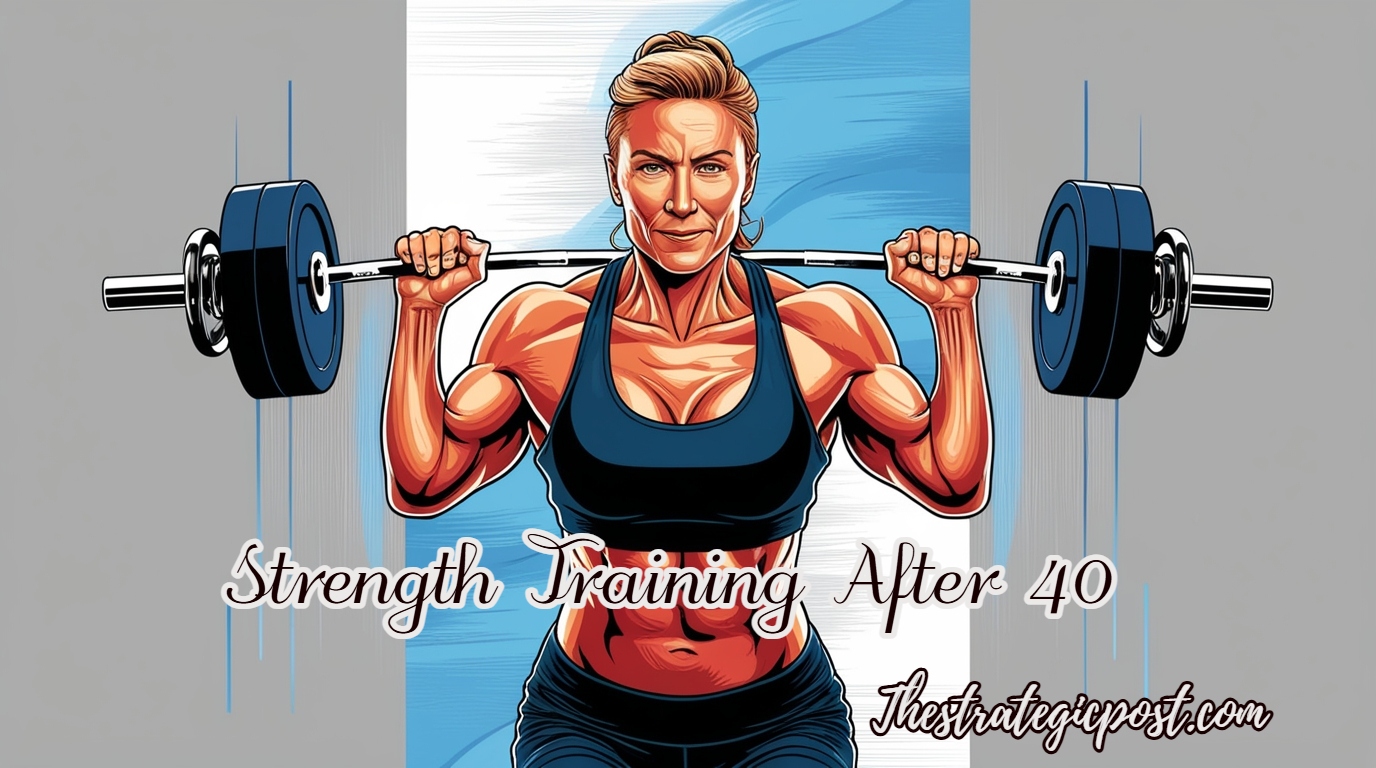- Strength Training After 40: Build Muscle, Stay Strong, and Age Gracefully
Strength Training After 40: Build Muscle, Stay Strong, and Age Gracefully
Turning 40 can feel like stepping into a new chapter—and it’s the perfect time to prioritize strength training. As we age, our bodies undergo changes that make maintaining muscle and overall fitness more challenging, but also more critical. Whether you’re new to working out or revisiting the gym after a hiatus, here’s how strength training after 40 can transform your health, with expert insights and actionable tips to get started.
The Importance of Strength Training After the Age of 40.
After 40, your body begins to experience a gradual decline in muscle mass—known as sarcopenia—and metabolism slows down. This means you lose about 3-5% of muscle mass per decade, which can affect strength, mobility, and even weight management. Strength training combats this decline, keeping you strong, energized, and more resilient as you age.
Benefits of Strength Training After 40
- Build and Preserve Muscle: Strength training stimulates muscle growth, counteracting the natural loss of muscle mass.
- Improve Bone Density: Resistance exercises strengthen bones, reducing the risk of osteoporosis.
- Enhance Metabolism: Muscle tissue expends more calories while at rest compared to fat, thereby aiding in weight management.
- Enhance Joint Health: Strong muscles support joints, reducing the risk of injury and arthritis.
- Improve Mental Health: Lifting weights releases endorphins, reducing stress and boosting confidence.
How Strength Training Changes After 40
When you’re in your 20s, recovery is faster, and your body is more forgiving of mistakes. After 40, a smarter, more intentional approach is essential to avoid injury and maximize results.
Key Differences to Consider
- Recovery Is Slower: Your body takes longer to heal, so rest days and proper sleep become more important.
- Joint Care Is Critical: Exercises that were once easy might strain joints if not done correctly. Focus on proper form and lower-impact movements.
- Consistency Over Intensity: It’s better to train consistently with moderate weights than to overdo it and risk burnout or injury.
- Warm-Up and Mobility Work: Warm-ups and dynamic stretching are non-negotiable to keep your body limber and injury-free.
Actionable Tips for Strength Training After 40
Ready to get started? Follow these expert-approved tips to maximize your results while staying safe.
Start Slow and Build Gradually
When beginning strength training or resuming after a hiatus, it is advisable to proceed with caution. Initiate your regimen with lighter weights and progressively increase the load as your strength develops.
Focus on Functional Movements
Incorporate exercises that mimic real-life activities, like squats, deadlifts, and push-ups. These improve balance, mobility, and strength in ways that benefit daily life.
Prioritize Compound Exercises
Moves that work multiple muscle groups, such as bench presses, rows, and lunges, give you the most bang for your buck.
Incorporate Rest and Recovery
Strive to allow a recovery period of 48 hours between strength training sessions targeting the same muscle group. Utilize rest days for engaging in light activities such as walking or practicing yoga.
Work with a Professional
If you have uncertainties regarding your form or programming, it may be beneficial to engage a personal trainer for assistance. They are capable of developing a customized plan that corresponds with your objectives and existing fitness level.
Nutrition Matters
Adequate protein consumption is essential for the repair and development of muscle tissue. It is advisable to target an intake of 20-30 grams of protein with each meal, complemented by healthy fats and complex carbohydrates to support your exercise regimen.
Strength Training at 40 vs. 20: What Really Stands Out
A common misconception is that strength training after 40 means you should “take it easy.” In reality, it’s about working smarter. While younger people might focus on building maximum strength or aesthetics, your priorities after 40 should shift toward longevity, function, and overall health.
Here’s a quick comparison:
- 20s and 30s: Focus on peak performance, heavier weights, and high intensity.
- 40s and Beyond: Emphasize proper form, controlled movements, and exercises that enhance everyday functionality.
Expert Advice: What Else Should You Know?
Strength training after 40 isn’t just about physical benefits—it’s about living life to the fullest. Dr. Sarah Mitchell, a certified strength and conditioning specialist, shares, “At 40, it’s not just about looking fit; it’s about feeling fit. When you prioritize strength training, you build a foundation for a healthier, more active life, whether that’s hiking with your kids or simply getting out of bed pain-free.”
And don’t forget the mental benefits. Strength training boosts self-esteem and keeps your brain sharp, making it a win-win for your body and mind.
Key Takeaways
Strength training after 40 is essential for maintaining muscle, supporting joints, and improving overall health. The secret lies in adapting your approach: focus on form, incorporate functional movements, and allow time for recovery. With a consistent routine, you’ll feel stronger, healthier, and ready to tackle life head-on.
Next Steps
If you’re ready to get started, grab a set of dumbbells or resistance bands and commit to just 2-3 sessions a week. Remember, progress takes time—but every rep brings you closer to a stronger, healthier you.
If you decide to make a purchase via the links available on this page, we may earn a referral fee at no additional cost to you.
If you Liked Reading our Blog Read More Blogs Here and Below is the Link to our WhatsApp channel Join it for the Latest Post Updates. (Read For WhatsApp Channel Privacy and Security Here).
.Disclaimer: The information presented in this blog is for educational and informational purposes only and should not be considered financial, Political, or cultural advice. All efforts have been made to ensure the accuracy of the content at the time of writing.
Think We Missed Something?
If you notice an error or have a suggestion, we encourage you to submit a correction. Help us keep our information up-to-date and reliable!











